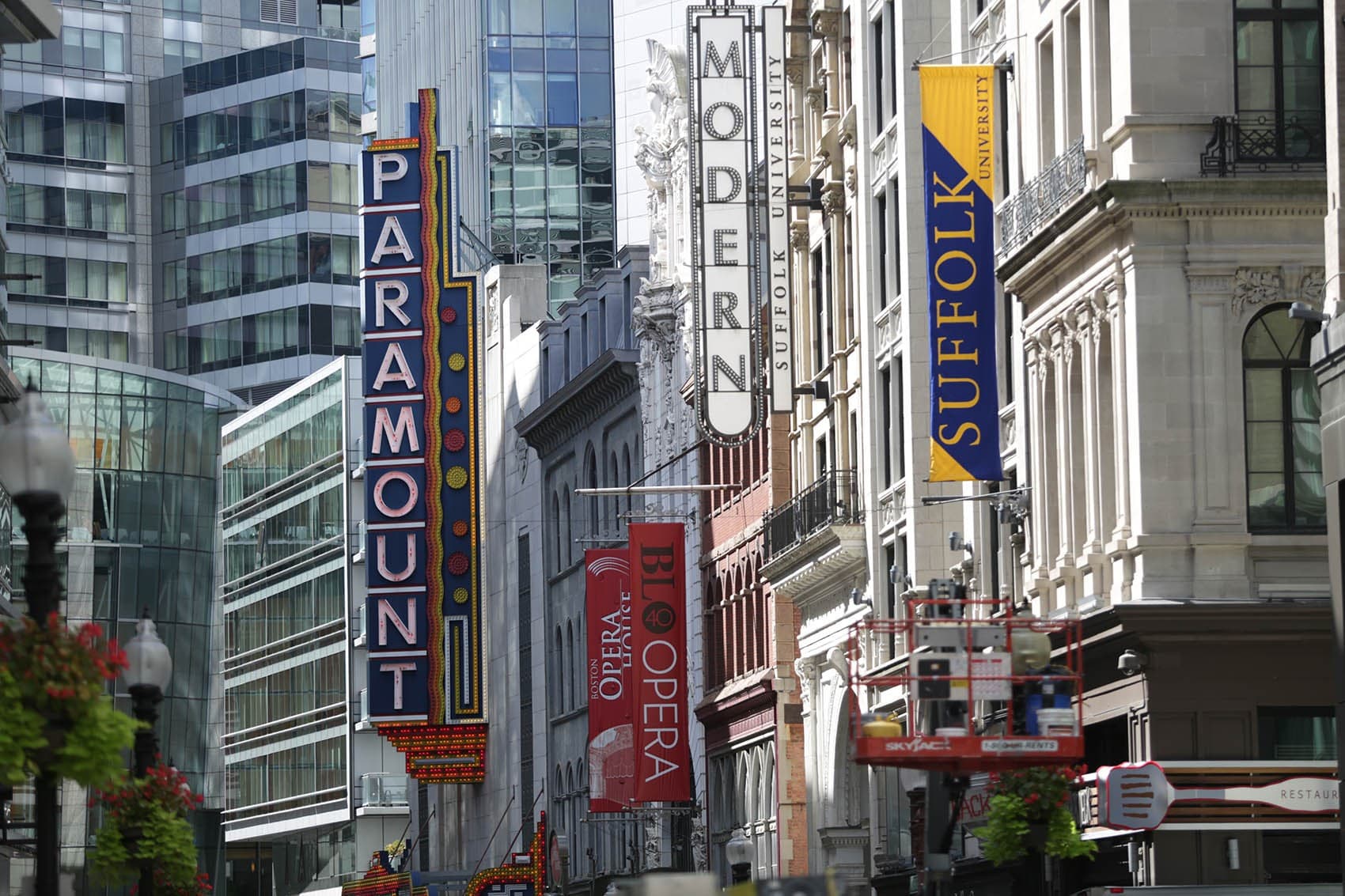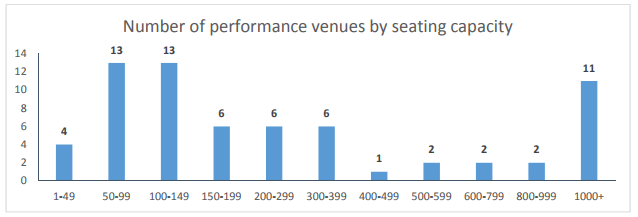Advertisement
Report: Boston Has Performing Arts Spaces, But Not The Kind Artists Need

A new assessment plan spotlights a misalignment between rehearsal and performance spaces artists need and those they have access to in Boston. There isn’t necessarily a lack of performing arts spaces, but a lack of spaces with the appropriate amenities, price tag and location.
The Performing Arts Facilities Assessment Plan was conducted by the Boston Planning and Development Agency, a joint effort between the city and the Technical Development Corporation (TDC). Surveying 190 arts organizations and 45 venue providers, the report is the second step of the city's cultural plan, referred to as Boston Creates, that was released last summer.
One of the imbalances noted is performance spaces for medium-sized audiences. In the chart below, you could see that there are considerably more venues for an audience of 50-199 or 1000+, compared to an audience of 400-999.

The draft report, which Mayor Marty Walsh commissioned in 2015, boils down to a clear imbalance: There is excess supply and unmet demand.
The overarching issue that has created this misalignment, according to the report, is the way arts spaces are financed and maintained. Most facilities either can’t afford to cover the costs of hosting artists or do not consider it a main goal. Likewise, artists can’t afford to rent some of these facilities.
The report notes that Boston "has very little governmental ownership of or funding for facilities" with only episodic funding by design, meaning there's not enough consistent capital support to maintain a facility.
Most solutions require early (and lots of) monetary investment, long-term support and a fresh approach to finding public-private partnerships and philanthropic funding sources. Joyce Linehan, Boston's chief of policy and planning, believes one of the best solutions is to work with developers to incorporate performing arts facilities into the designs of future projects.
"This document serves as a really great basis for thinking about how we approach that from a planning perspective, from the beginning, as opposed to building it in as an after thought when it's too late," Linehan says.
Advertisement
A prime example of this is the recently announced expansion plan for the Huntington Avenue Theatre. Developers QMG Huntington are working with the Huntington Theatre Company to expand the usable space surrounding the area for community use.
"The Huntington serves as a great example of the kinds of things we can do if we ask developers and people who are in need of space to work together at the front end of a project," Linehan says.
Another example the report notes is the Seaport Square development. The city is working with its developers to include a variety of spaces that would accommodate artists’ needs including multi-use and live/work spaces.
In addition to working with developers, the plan acknowledges there is space the city maintains that could be better utilized — notably, the Strand Theatre. The large city-owned theater sits in Dorchester and has been the topic of conversation among Boston artists, like Tory Bullock, who want more versatile work space.
This article was originally published on July 11, 2017.
